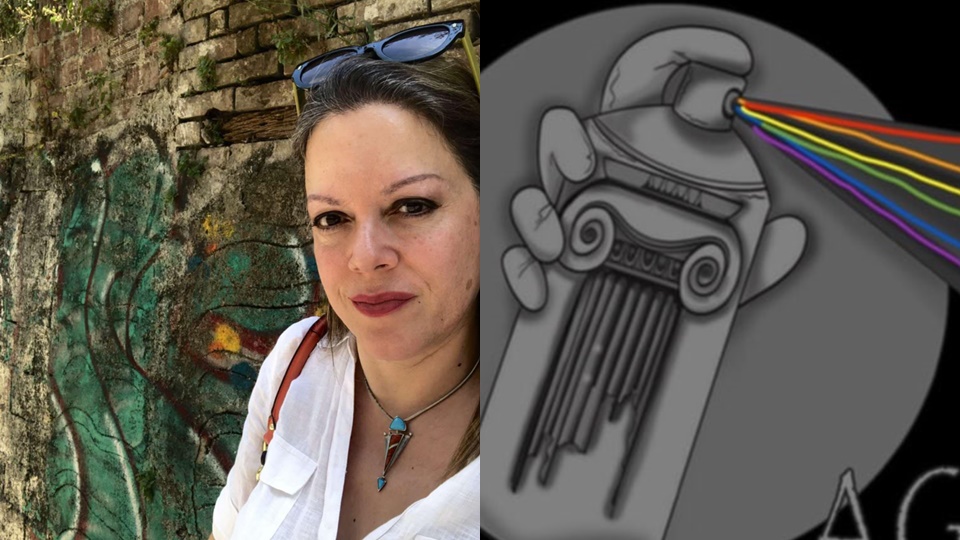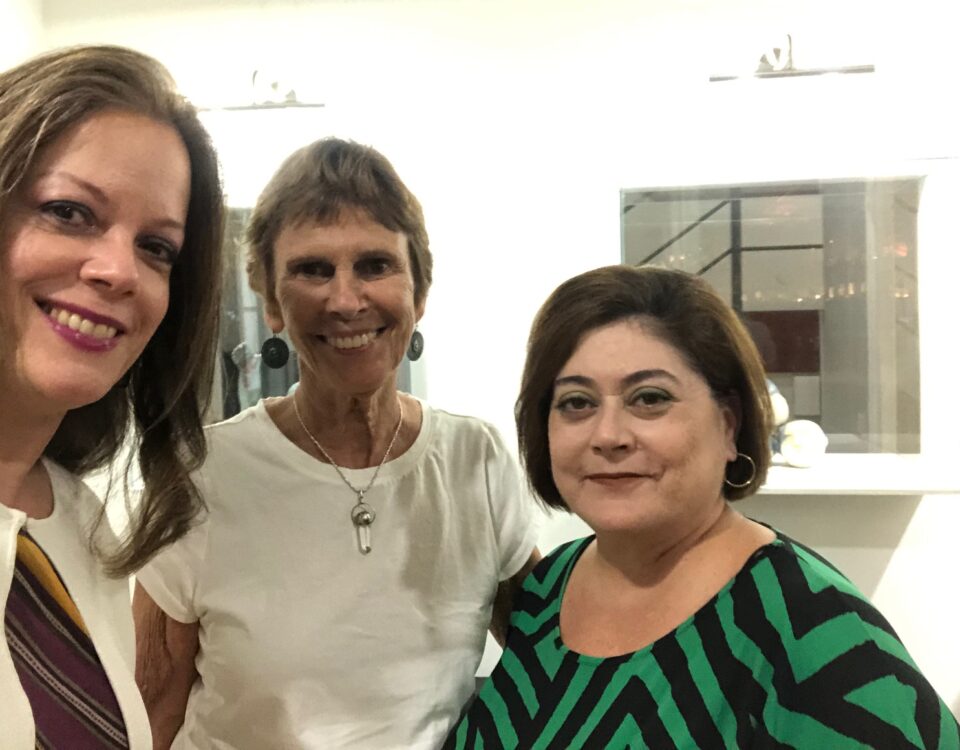Dr. Dionysis Mourelatos

A pop-up graffiti event, for the first time
4 September 2023
Sotiris Fokeas (a.k.a. Soteur)
7 November 2023Dr. Dionysis Mourelatos
A prominent Byzantinologist, G. Lampakis, a valuable archive, a significant exhibition dedicated to Smyrna, and a Pop Art mural at the Byzantine and Christian Museum. What was the impetus and your reasoning for this admittedly original coexistence?
The idea of the coexistence came from a graduate student, Vasilis Lianos, who knew Soteur's work from Instagram. After several discussions, we agreed that adding a contemporary "glance" at early 20th century Smyrna would successfully frame the "glance" of Georgios Lampakis.
Georgios Lampakis' perspective on Smyrna and Asia Minor was our "guide" in this museological approach. Soteur's perspective, however, also offered a modern approach, which is necessary to attract a younger audience to an exhibition that was based on a historical archive, which - despite its importance - is not usually "attractive" museologically and museographically. The practice of adding works by contemporary artists is well-known, especially in the Anglo-Saxon world, especially in recent years. The aim, usually, is to offer alternative approaches to a subject. Therefore, in the same direction, Soteur's work was also included, offering a fresh "look" and was embraced by the visitors of the exhibition. In fact, its title "Dream" gave us the opportunity to invite visitors, when they arrived at the exhibition space of Soteur's work, to "dream" of "Smyrna of the early 20th century" and to mentally create their own image.
An exhibition that involves students to a rare degree of participation, as well as Soteur's Dream for Smyrna (Izmir). Challenges, conquests and obstacles to this daring endeavor.
Student participation was very important and was an integral element of the exhibition from the beginning. The students worked within teams both in the preliminary study phase (May-July 2022) and during the implementation phase (September - December 2022) and gathered/supported the actions taken during the exhibition through ‘proposals for action’ during in the exhibition, or their participation in guided tours for the public, special educational actions (for people with visual/hearing impairments), educational programs for primary/middle school and high school youth.
Therefore, their participation is particularly positively valued, as they breathed life into the exhibition both during the preparation phase and throughout its duration. In addition, the exhibition was supported by the postgraduate students with a communications team, which edited the exhibition's social media posts as well as press releases and communication with journalists who wrote about the exhibition in the electronic and printed press.
Modern museum practice requires that the main exhibition be accompanied by other activities. What more can we expect?
The exhibition was accompanied by various activities that are mainly part of the performing arts. More specifically, it was accompanied by an event by the "Storytellers", who presented fairy tales from Asia Minor in the exhibition area, as well as by the "Masters of the Psalter Art", who again sang hymns for Saint Polycarp, patron saint of Smyrna, in the exhibition area. Finally, the most important action took place at the exhibition site in collaboration with the (Hellenic) National Theatre. It was the most important, because it was designed in collaboration with director Olga Pozeli and the staff of the National Theater but also in collaboration with the postgraduate students of the Department of Monument Management: Archaeology, City and Architecture. The theatrical performance "George Lampakis travels..." was performed for 3 weeks at the exhibition site and invited its visitors to return and delve emotionally into Georgios Lampakis's perspective on Asia Minor. The event was based on Georgios Lampakis' book "The Seven Stars of the Apocalypse", which was particularly important for the museological rationale of the exhibition, as it revealed the motivations and approach to the space and monuments of Georgios Lampakis.
All the actions contributed to the multi-sensory perception of the exhibition by its visitors, illuminating different aspects of the culture of Smyrna and Asia Minor, as well as the personality of Georgios Lampakis. The performing arts actions in combination with the museographic design (documents, photographs, postcards) are spread across two sections of the exhibition, emphasizing the "dreamlike" approach to the subject, but Soteur's work also allowed visitors to the exhibition to "balance" between its educational/pedagogical goals and a synesthetic approach.
Dionysis Mourelatos graduated with a Degree in Archaeology and History of Art at the University of Athens. He completed postgraduate and doctoral studies in Byzantine Art and Archaeology at the University of Athens. His doctoral thesis (2009) was entitled "Image: position and functionality. Since 2009, he has been teaching at the University of Athens' Postgraduate Program "Management of Monuments: Archaeology, Urban Planning and Architecture." In addition, he teaches or has taught at Greek and Cypriot universities (E.A.P., P.A.D.A., A.P.K.Y., University of Thessaly, Ionian University). He has worked on many research projects for the Vrijes Universiteit Amsterdam, the University of Athens, the Ionian University, the Mount Sinai Foundation in Athens and the Monastery of Saint Catherine in Sinai. He has written and presented several papers, mainly concerning Mount Sinai and the historiography of Byzantine art and archaeology. He is the editor of the collective volume Art and Archaeology in Byzantium and beyond, Oxford: British Archaeological Reports, 2021.


